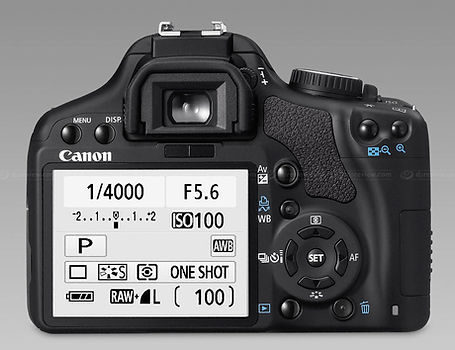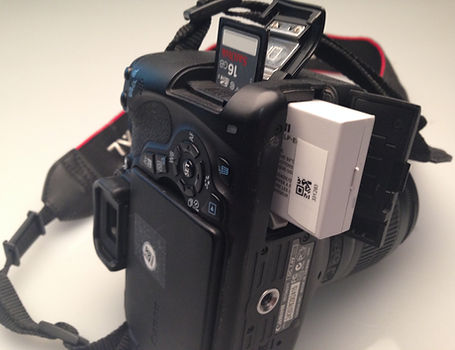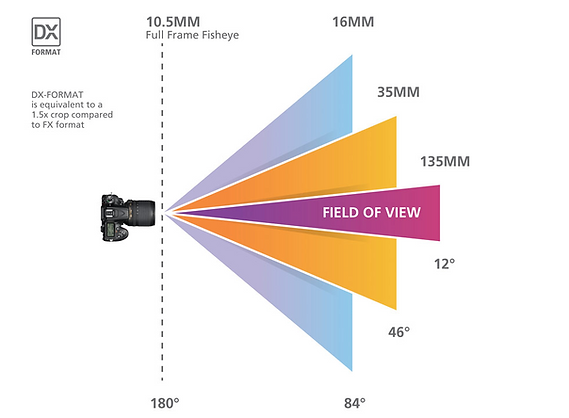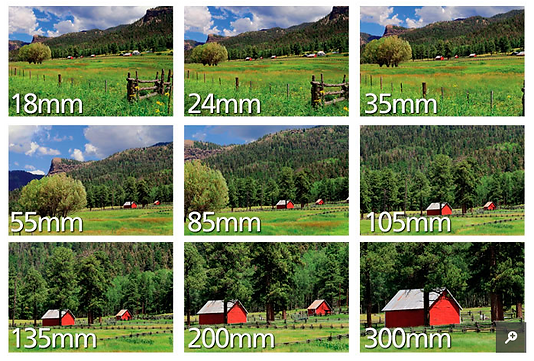How to set your Camera.

Our Class Camera
Canon Rebel XS (Digital)
During class time we use the Canon XS camera Pictured to the left.
Please familiarize yourself with the location and naming conventions that Canon uses to control the camera and its settings.
But we also have T3, T5, T5i, Nikon, & an asortment of film cameras.

Looking at the TOP of the camera we find several important buttons & dials that help or camera function as we want it to function.
Shutter Release
Adjustment Dial
ISO Access
Power Switch
We primarily use the following 4 modes
M - Manual
Av - Aperture Value
Tv - Shutter Value
P - Program
These Modes give you the the photographer the greatest flexibility to control the effects of the camera and lens to achieve the desired results you first intended.

Mode Dial
Flash Release
Auto Focus
Manuel Focus

The Back of the camera shows the remaining control buttons and the information screen. Please familiarize yourself with the locations of these controls.


Changing the Battery & SD Card
The battery compartment is usually located on the bottom of the camera. The SD card slot will be found either in the battery compartment. or on the side as it is pictured here.
There is a small retaining clip that holds the battery in place. move that aside to remove the battery.

Changing or Cleaning a Lens
To remove the lens.. Press the button (indicated by the RED arrow)
and rotate the lens counter clock-wise.
To re-attach the lens.. align the markers (indicated by the Green arrows) and rotate the lens clock-wise until it locks into place.
If you are cleaning the lens.. please use a lens cloth or a soft cotton material. For stubborn grit you may need to use an optical cleaning solution.
WINDEX is NOT a good optical cleaning solution.
DO NOT USE WINDEX!! IT WILL RUIN THE LENS.
Understanding Lenses
There are several factors that apply to be able to understand lenses and how they work with your camera.
The first concept is "Focal Length" another is "Field of View." The following will walk you through each.
Focal Length
The focal length of your lens essentially determines how ‘zoomed in’ your photos are. The higher the number, the more zoomed your lens will be. It is often misunderstood that the focal length is measured from the front or rear of the lens when, in reality, it’s the distance between the point of convergence in your lens to the sensor or film in your camera.
Take a look at the diagram... >>>>>

Crop Factor & Field of View
Shooting on a crop sensor is what’s known as the ‘crop factor’. This essentially means that any full frame lenses (EF, FX, etc.) that you put onto a crop sensor body will have a cropping effect.
The crop factor is approximately 1.6. In real terms, this means that if you shoot at 35mm, the actual result will be closer to a 50mm image.
The diagrams show the way this works. What you’re effectively doing is zooming in on an image, and avoiding the widest parts of the scene.


Ultra Wide Angle 14-24mm
These lenses are often considered specialty items and the range is not often included as part of a kit lens. They create such a wide angle of view that they can appear distorted as our eyes aren’t used to seeing that sort of range. Ultra wide angle lenses are often used in event and architectural photography for getting a lot into a photo when shooting in a confined space. Wide and ultra wide lenses are about putting yourself in the middle of it all, rather than simply fitting in the whole of a scene. These lenses are not particularly suitable for portraits as they enhance the perspective so much that facial features can look unnatural.
Wide Angle 24-35mm
This is where you’ll find most kit lenses for full frame cameras start. 24mm is roughly the point at which the distortion that appears to stretch the side of an image stops appearing unnatural. They are used widely by photojournalists for documenting situations as they are wide enough to include a lot of the context whilst still looking realistic.
Standard 35mm-70mm
It’s in this range (at about 45-50mm) that the lens will reproduce what our eyes see (excluding peripheral vision). I personally like to use this range when shooting on the street or with friends in a close setting such as at the dinner table or the pub.
A standard lens such as a 50mm f1.8 is an excellent, inexpensive addition for a camera and will provide excellent results. Prime lenses (lenses with a fixed focal length – can’t zoom) will always provide better results than your kit lens as it is built with a single purpose in mind. It does one job well rather than multiple jobs poorly.
Mild Telephoto 70-105mm
This range is often where kit lenses stop and you’ll start to get into the range of telephoto lenses and portrait primes (around 85mm). This is a good range for portrait lenses. The natural perspective of the lens will separate the face from the background without completely isolating it.
Telephoto 105-300mm
Lenses in this range are often used for distant scenes such as buildings or mountains. They’re not suitable for landscape photography because of the way they flatten the perspective of a scene. Lenses in a range higher than this are mostly used for sport and animal photography.

